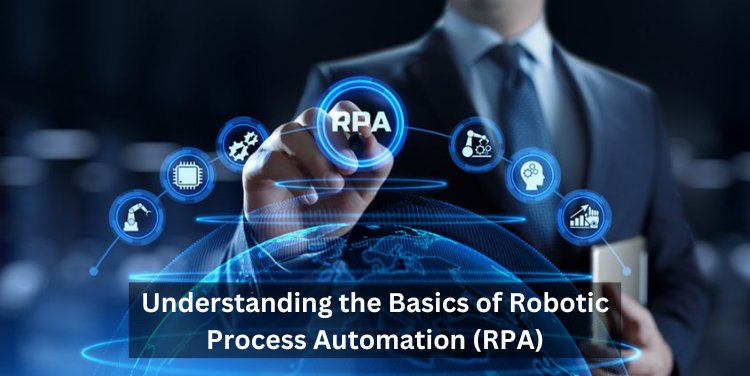Understanding the Basics of Robotic Process Automation (RPA)

In today's digital age, businesses are constantly seeking innovative solutions to streamline operations, improve efficiency, and reduce costs. One such solution gaining momentum is Robotic Process Automation (RPA). RPA involves the use of software robots or "bots" to automate repetitive tasks, allowing organizations to enhance productivity and focus on higher-value activities. In this blog post, we'll delve into the fundamentals of RPA, its benefits, implementation considerations, and future outlook.
What is Robotic Process Automation?
Robotic Process Automation (RPA) is a technology that utilizes software robots or artificial intelligence (AI) to automate repetitive, rule-based tasks traditionally performed by humans. These tasks can range from data entry and invoice processing to customer inquiries and report generation. RPA robots interact with applications and systems just like humans, utilizing user interfaces to execute tasks without the need for complex integration.
Key Components of RPA:
-
Software Robots: These are the virtual workers that mimic human actions to perform tasks within digital systems.
-
Process Automation: RPA automates manual processes by following predefined rules and workflows, eliminating human intervention.
-
User Interface Interaction: RPA robots interact with applications and systems through user interfaces, mimicking human actions such as clicks, typing, and data entry.
-
Centralized Control: RPA platforms provide centralized management and monitoring of robots, allowing organizations to efficiently manage and scale automation initiatives.
Benefits of RPA:
-
Enhanced Efficiency: By automating repetitive tasks, RPA reduces manual effort and processing time, leading to increased efficiency and productivity.
-
Cost Savings: RPA enables organizations to achieve cost savings by reducing labor costs, minimizing errors, and optimizing resource utilization.
-
Improved Accuracy: With RPA, tasks are executed consistently and accurately, reducing the risk of errors associated with manual data entry and processing.
-
Scalability: RPA solutions are scalable, allowing organizations to easily deploy additional robots to meet growing demands without significant infrastructure investments.
Implementation Considerations:
-
Process Identification: Identify suitable processes for automation by assessing their suitability based on criteria such as volume, rule-based nature, and frequency.
-
Technology Selection: Choose an RPA platform that aligns with your organization's requirements, considering factors such as scalability, integration capabilities, and ease of use.
-
Change Management: Implementing RPA requires organizational change management to ensure successful adoption and alignment with business objectives.
-
Security and Compliance: Ensure that RPA implementations adhere to security protocols and regulatory requirements to mitigate risks associated with data privacy and compliance.
Future Outlook:
The adoption of RPA is expected to continue growing as organizations increasingly recognize its potential to drive operational efficiency and innovation. Furthermore, advancements in AI and machine learning are poised to enhance RPA capabilities, enabling more complex automation scenarios and intelligent decision-making by robots.
Robotic Process Automation (RPA) offers significant opportunities for organizations to optimize processes, reduce costs, and improve productivity. By leveraging software robots to automate repetitive tasks, businesses can focus on strategic initiatives and deliver enhanced value to customers. As technology continues to evolve, RPA will remain a key enabler of digital transformation in the years to come.
What's Your Reaction?















